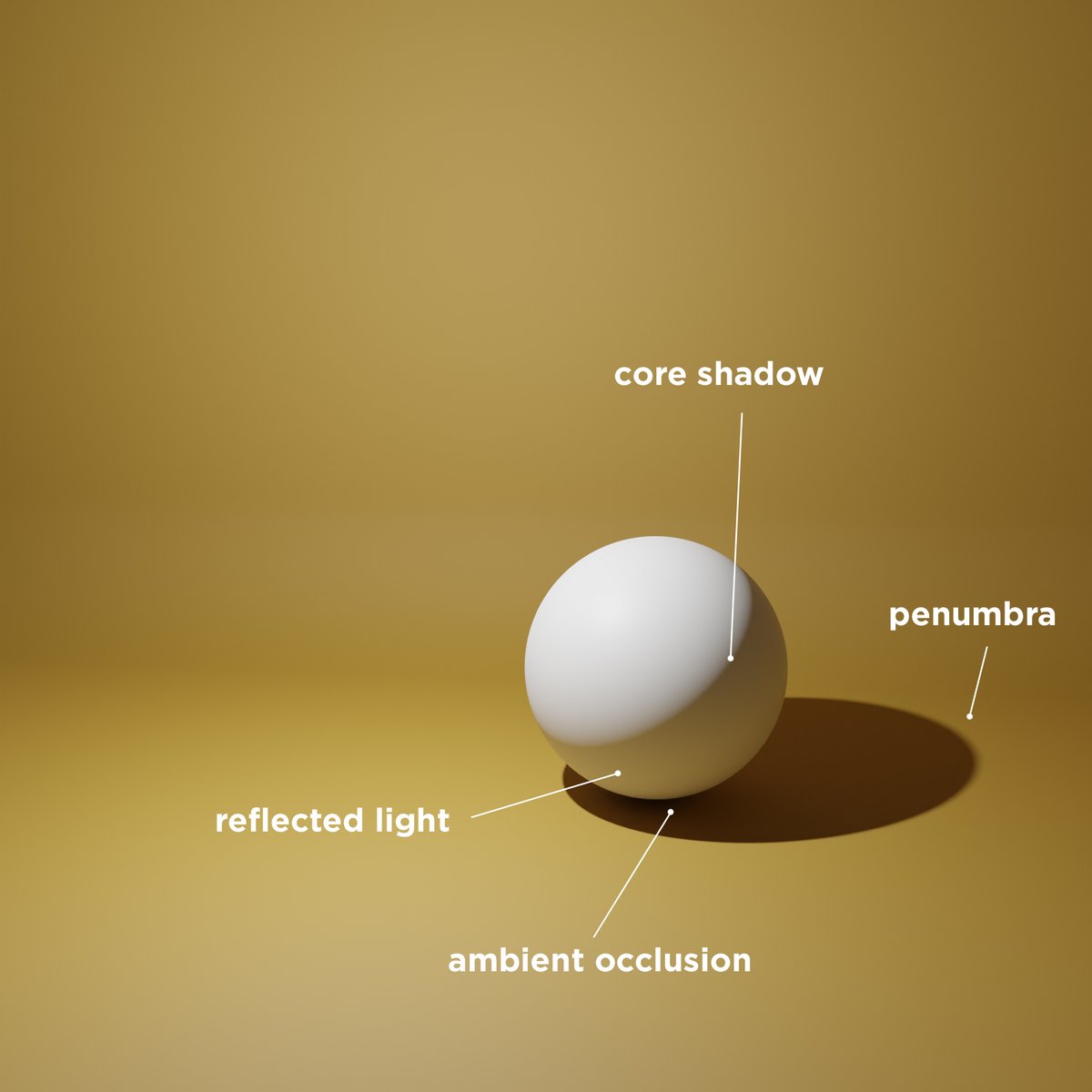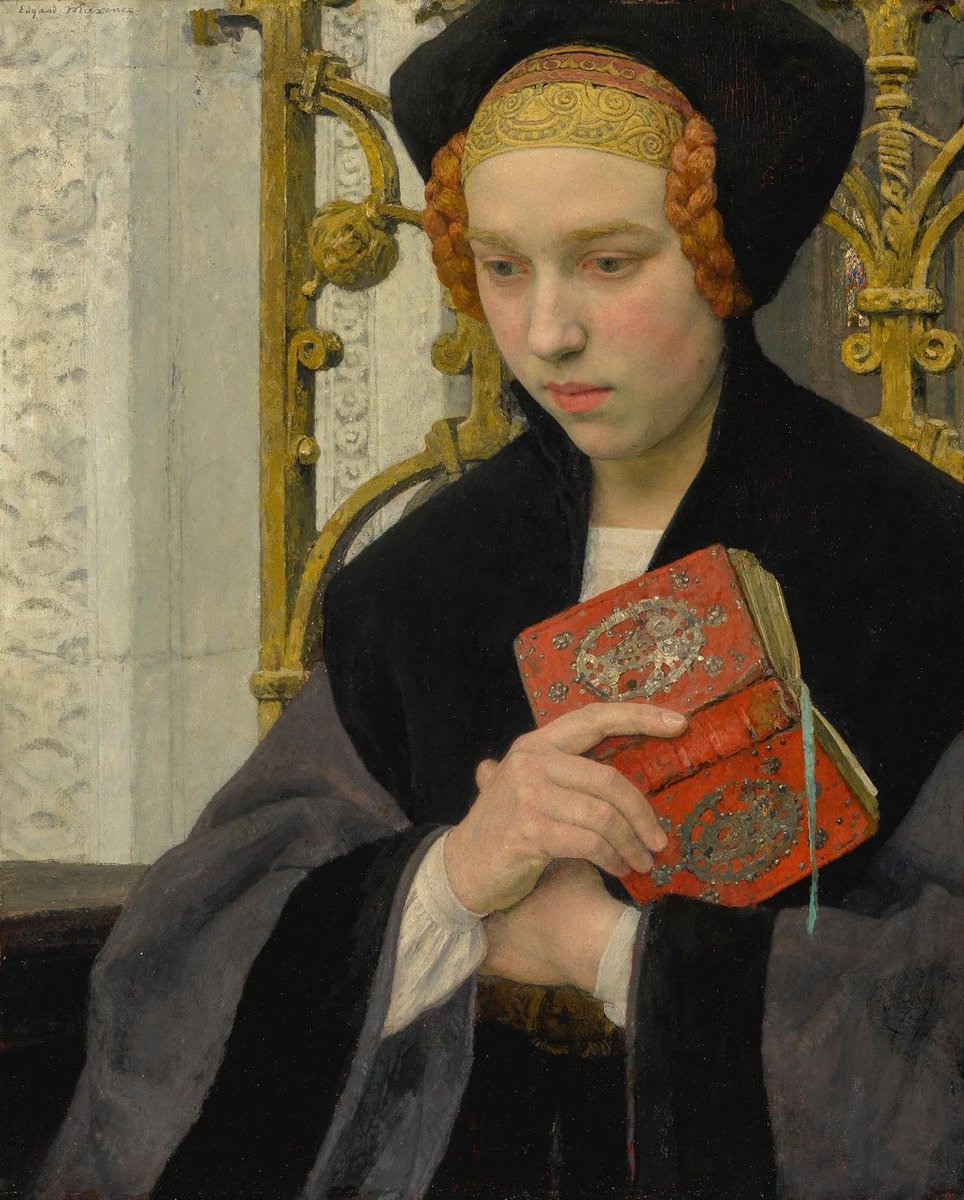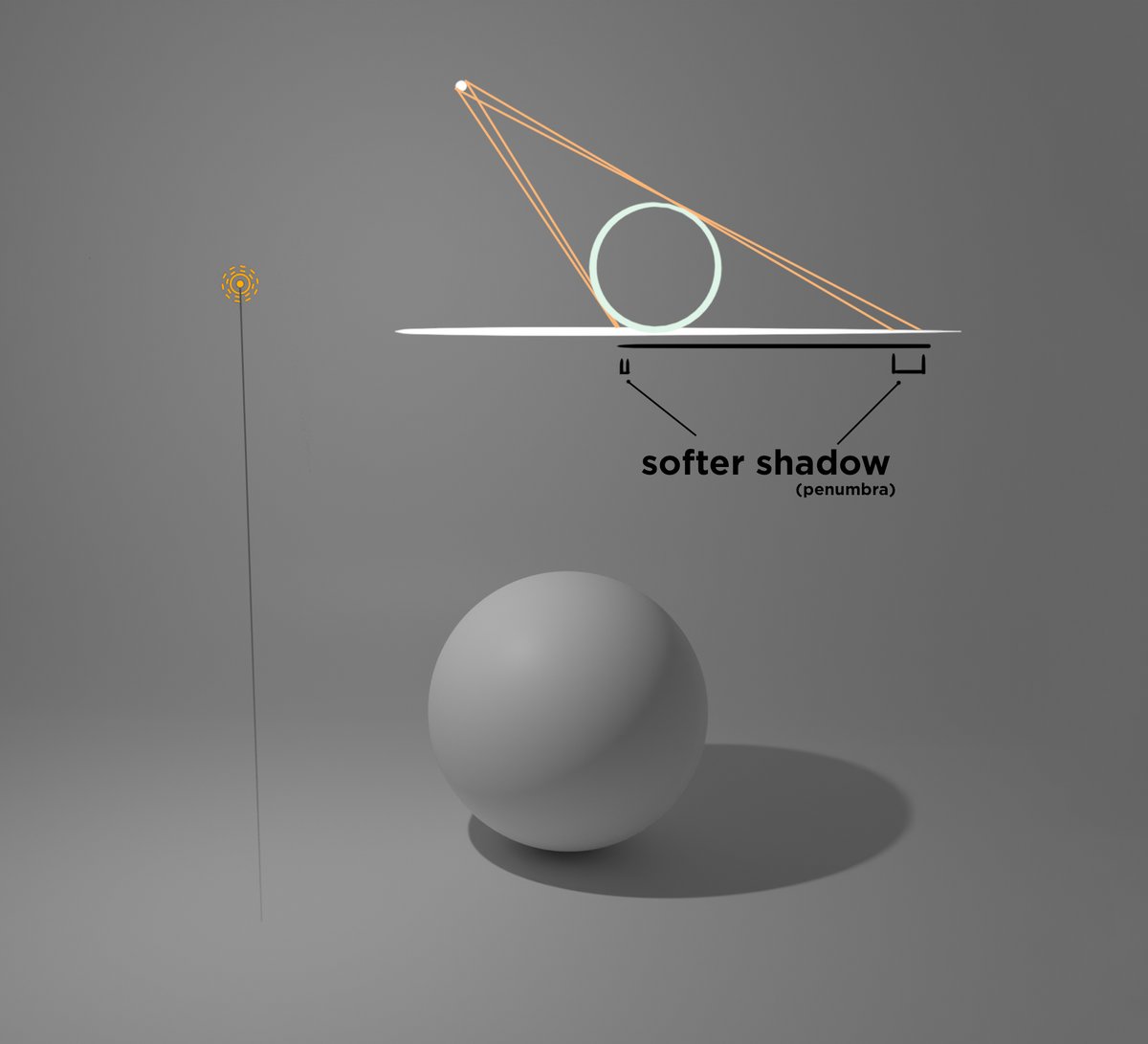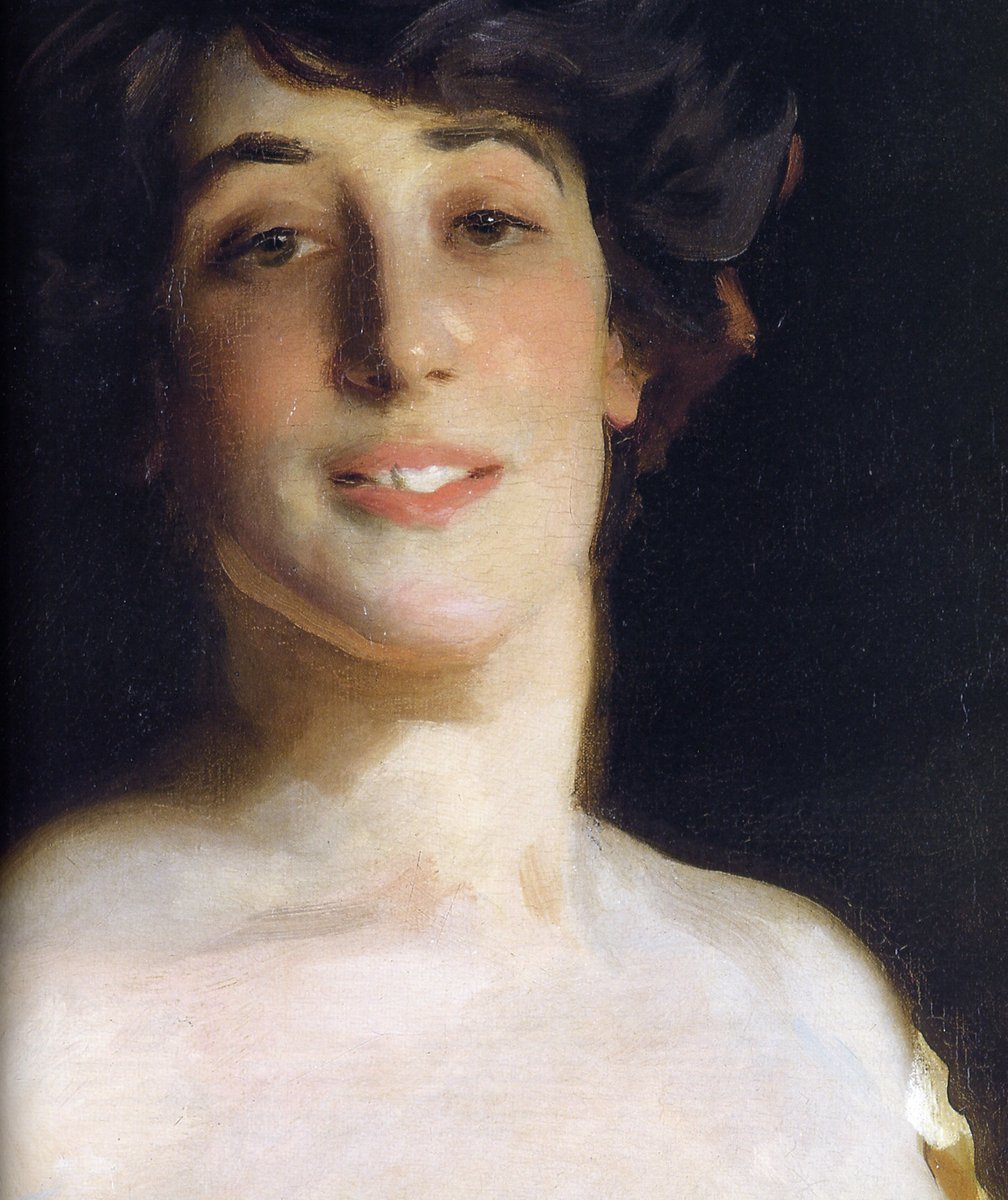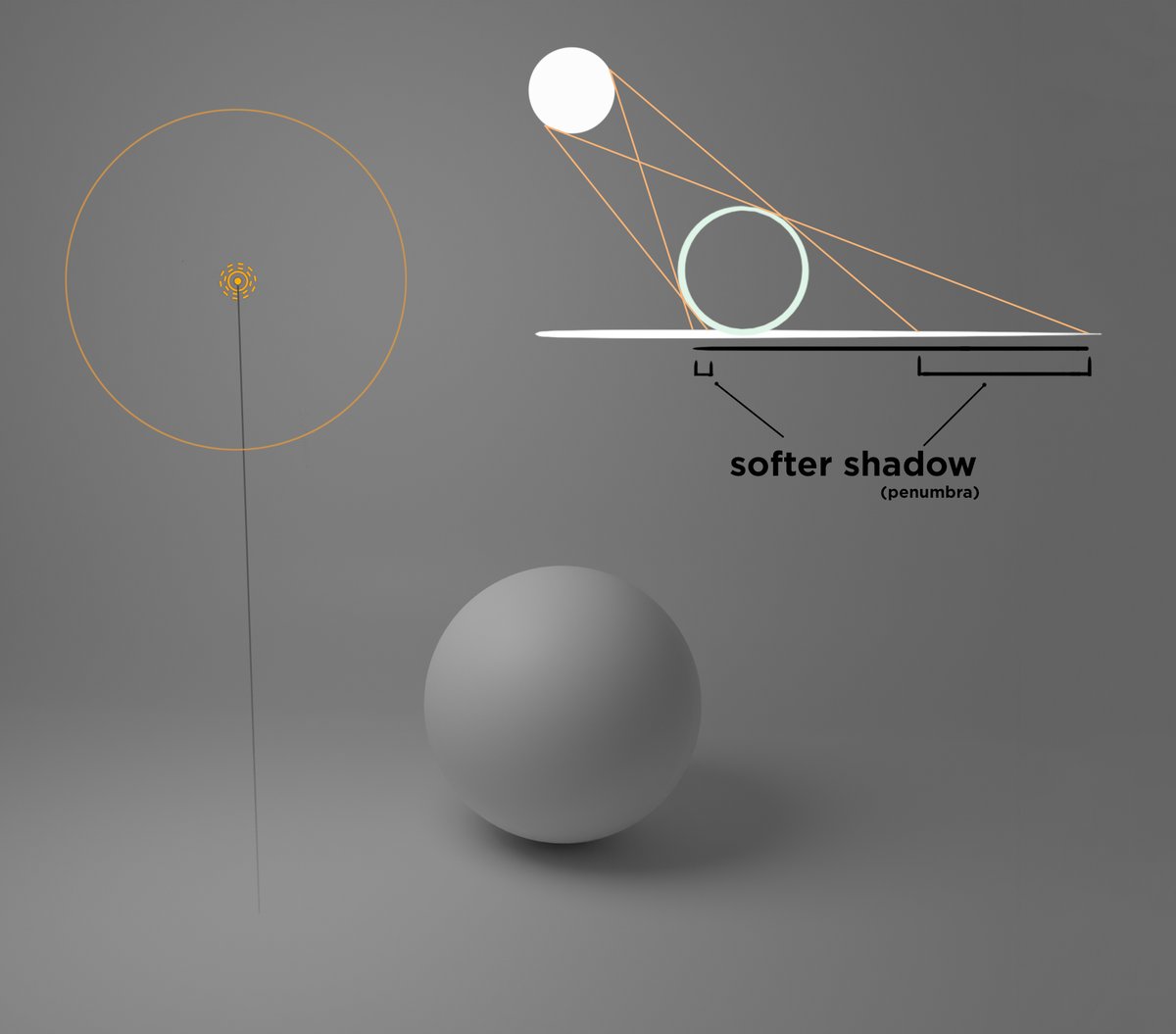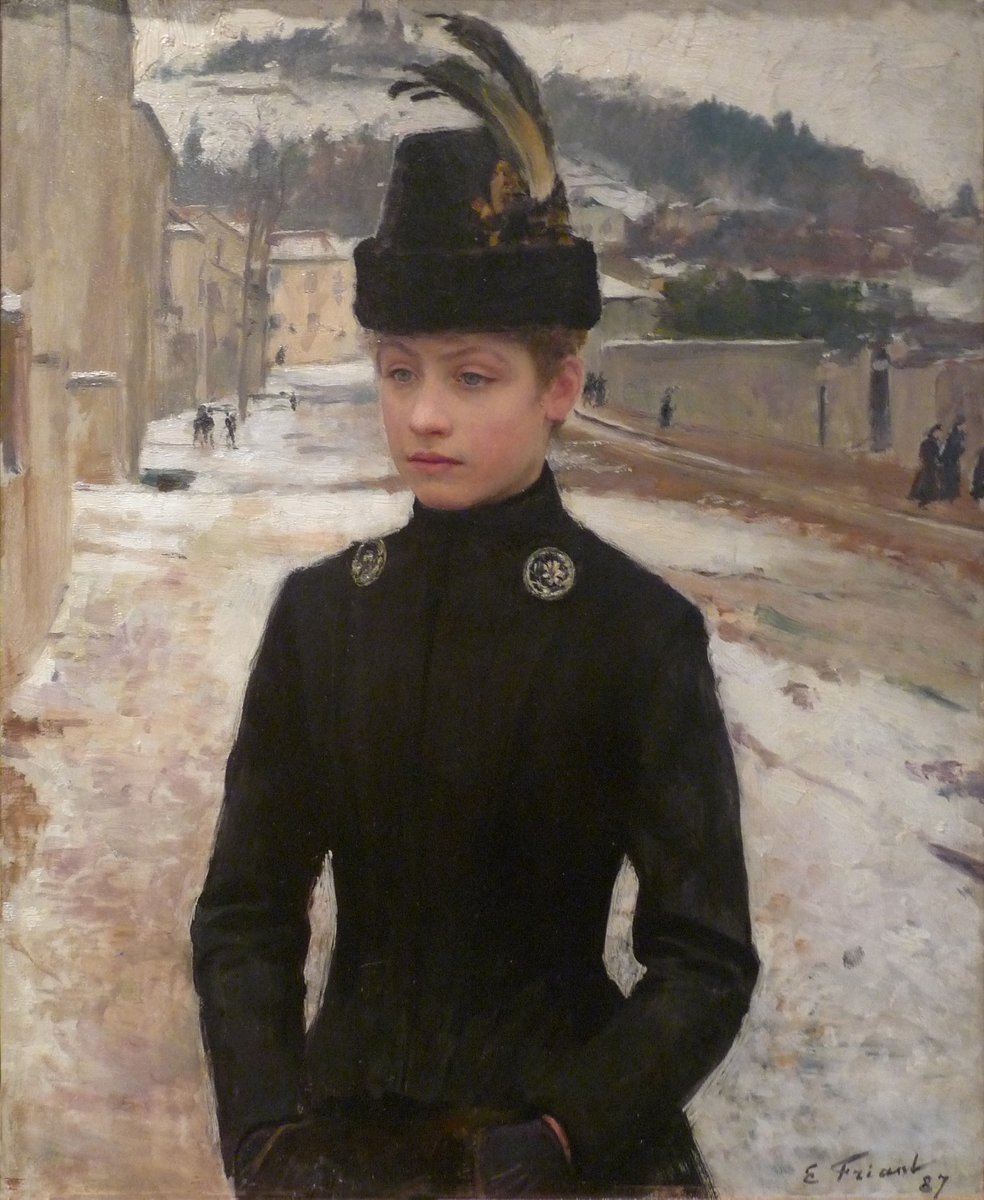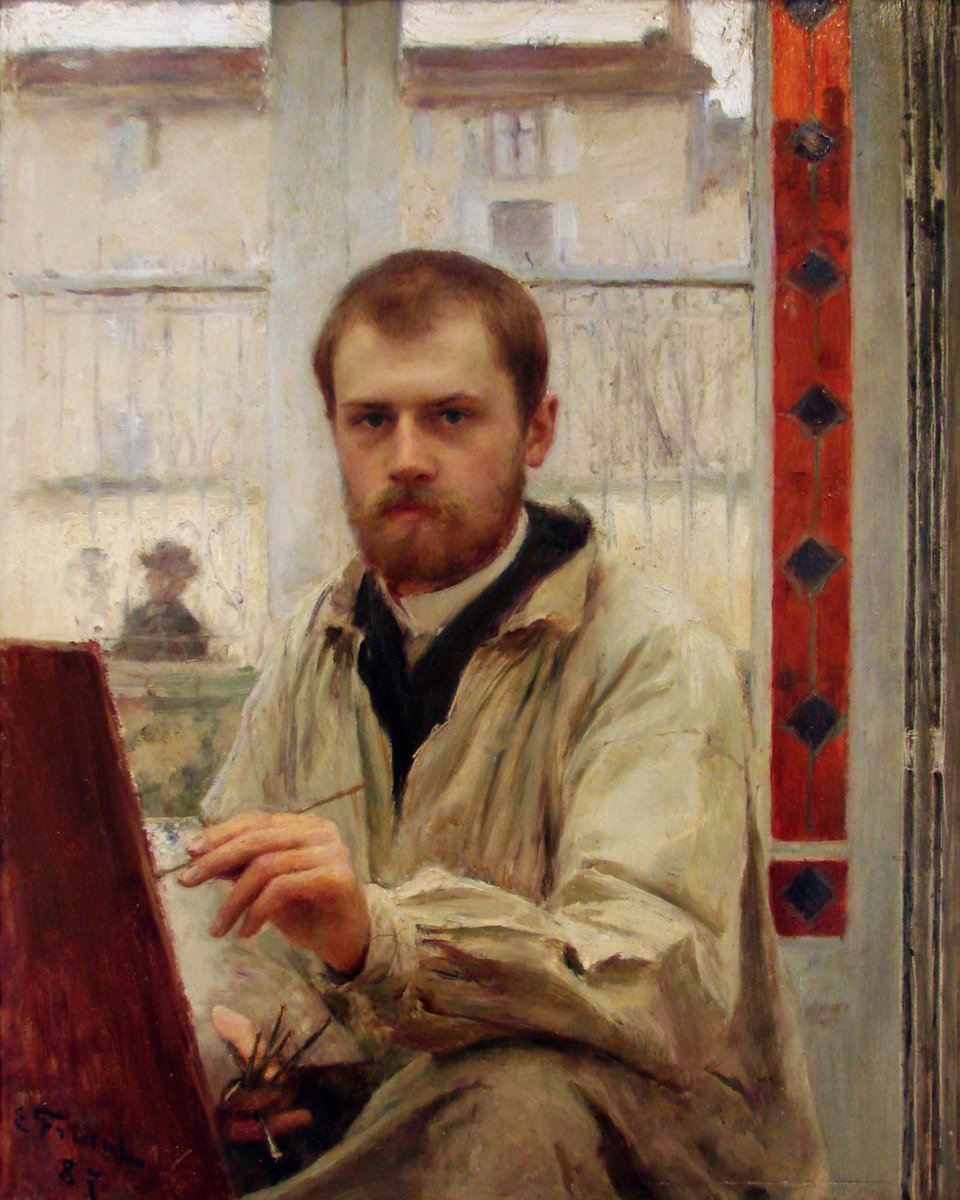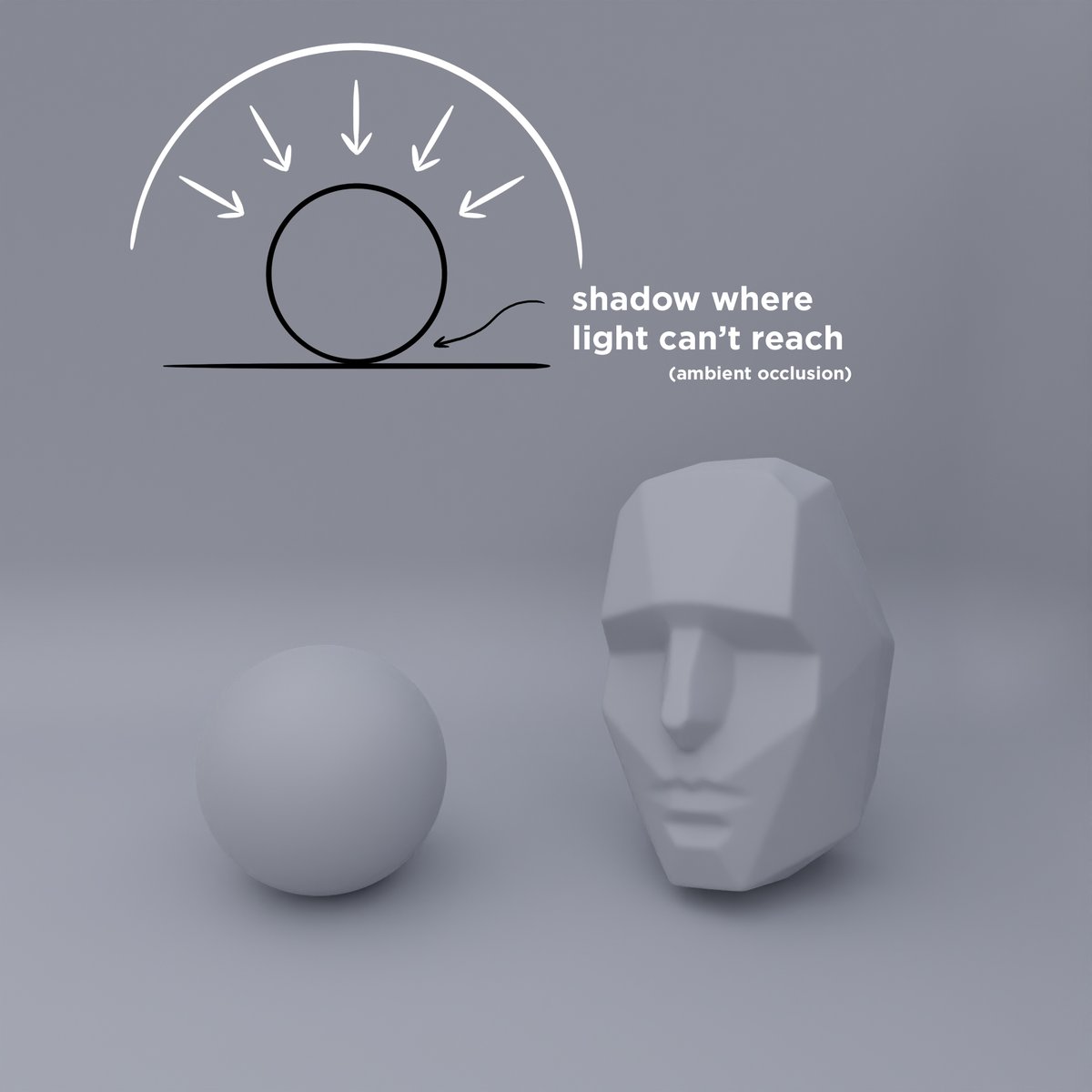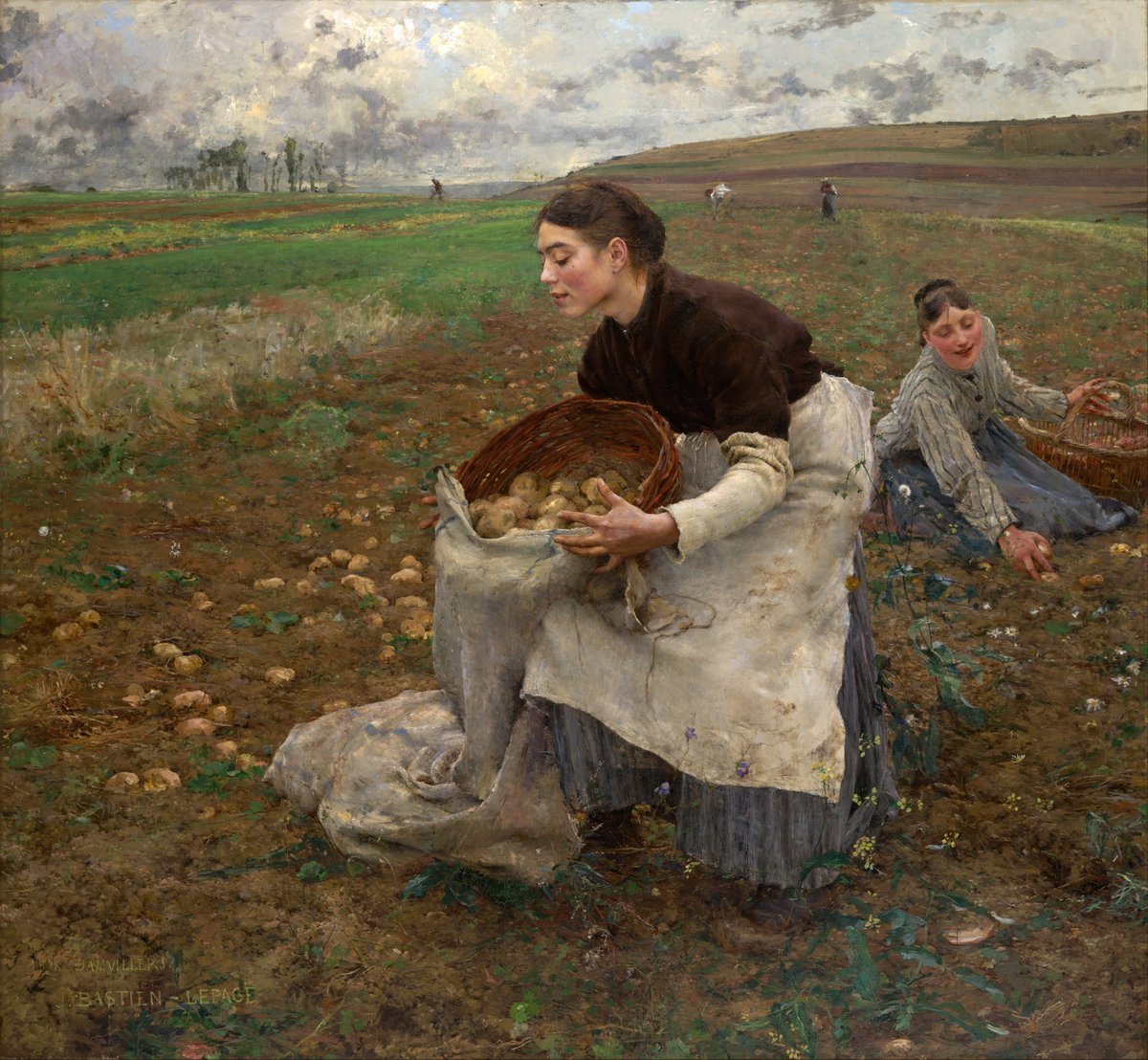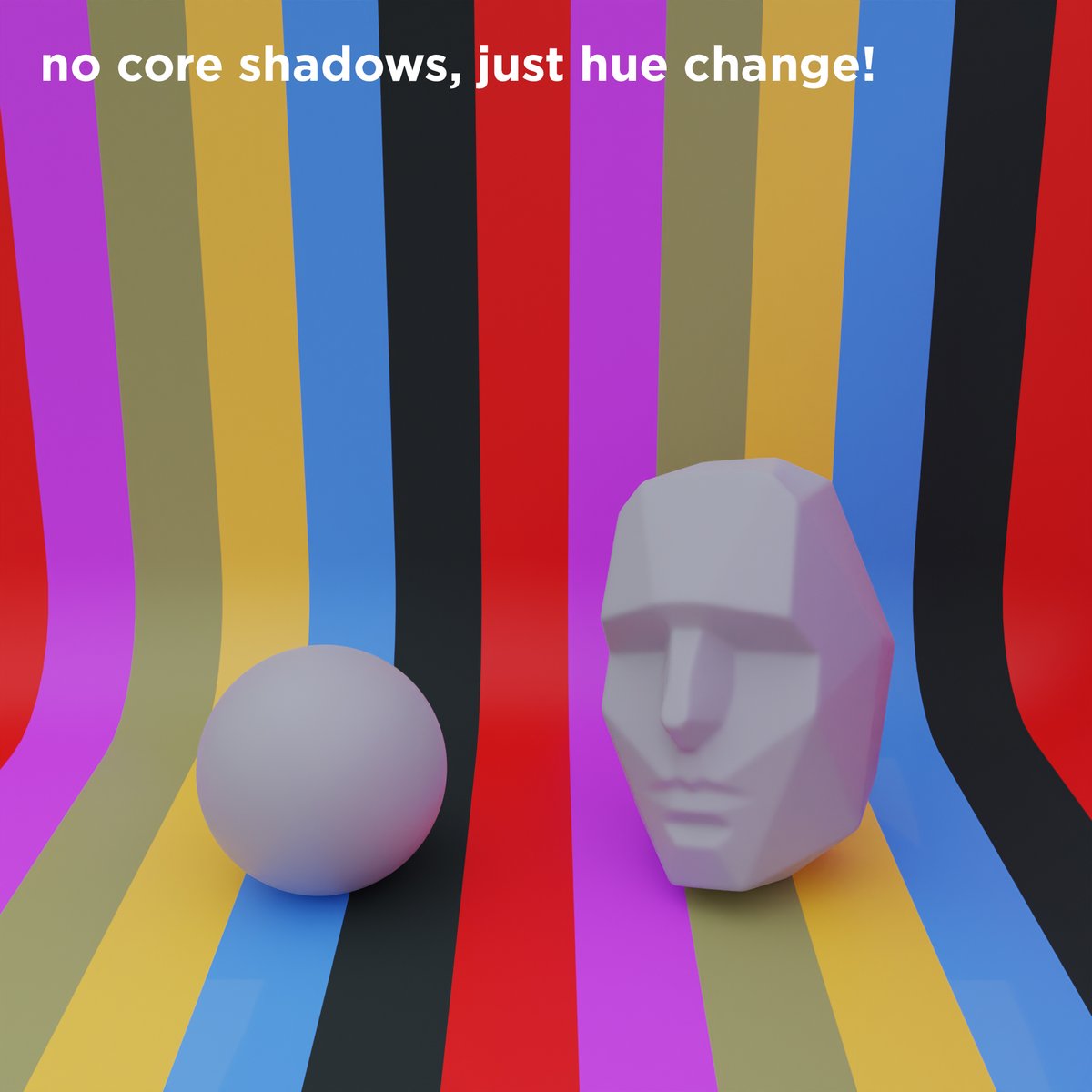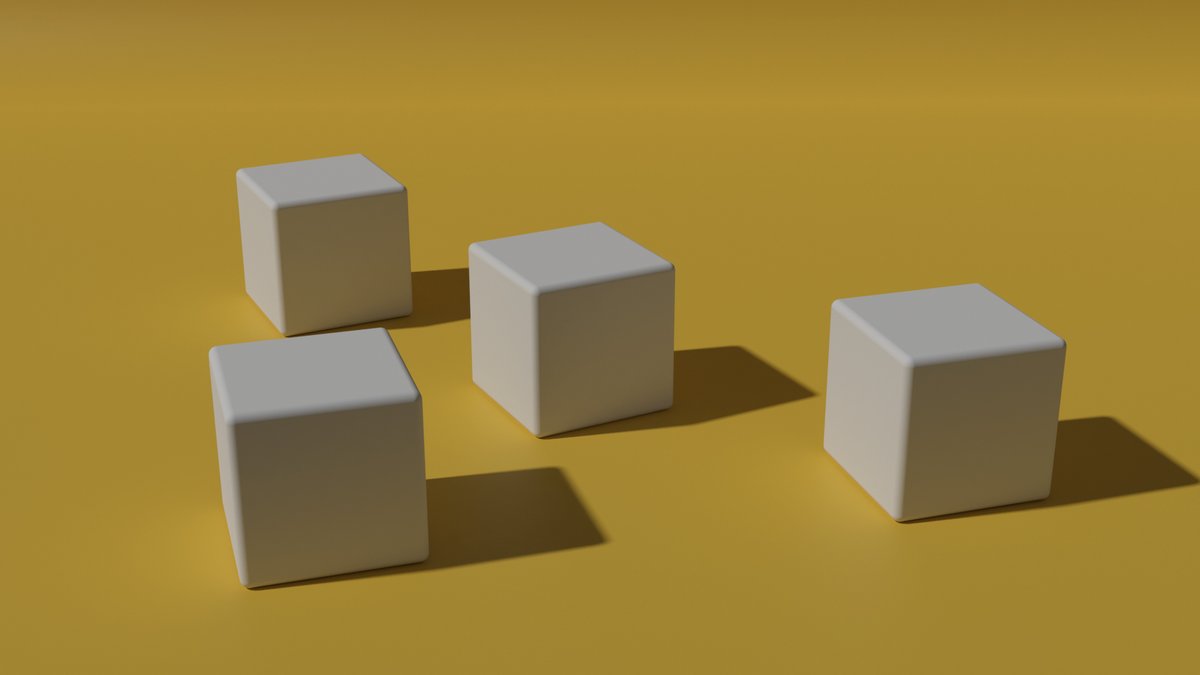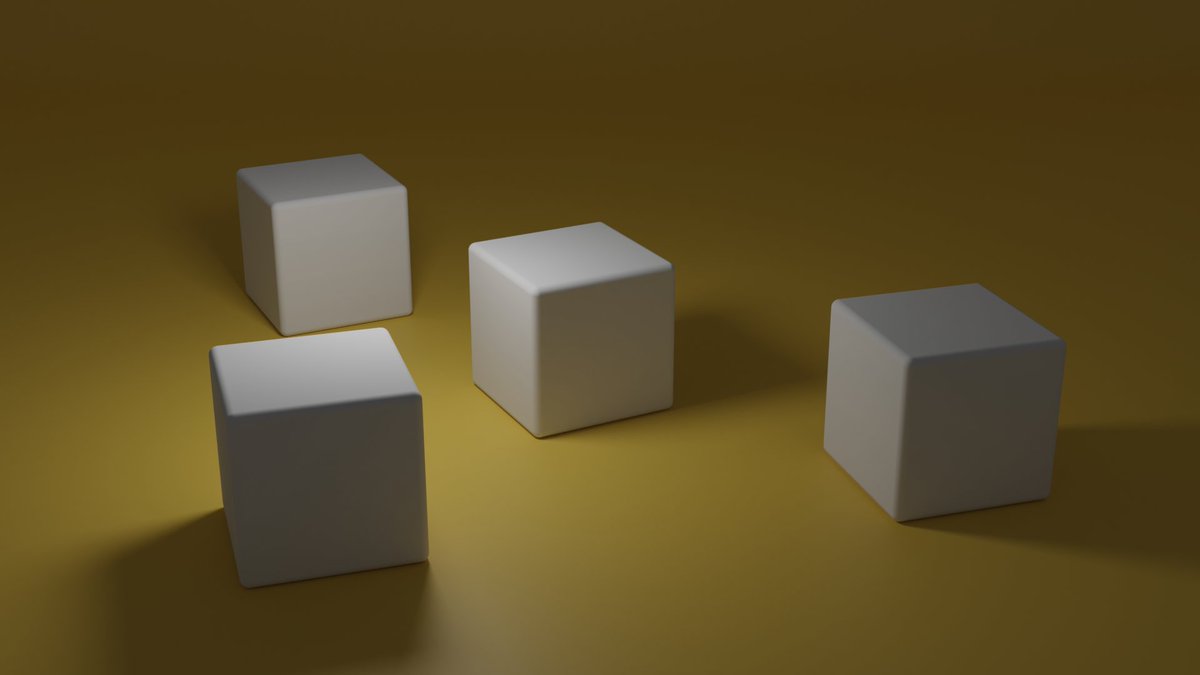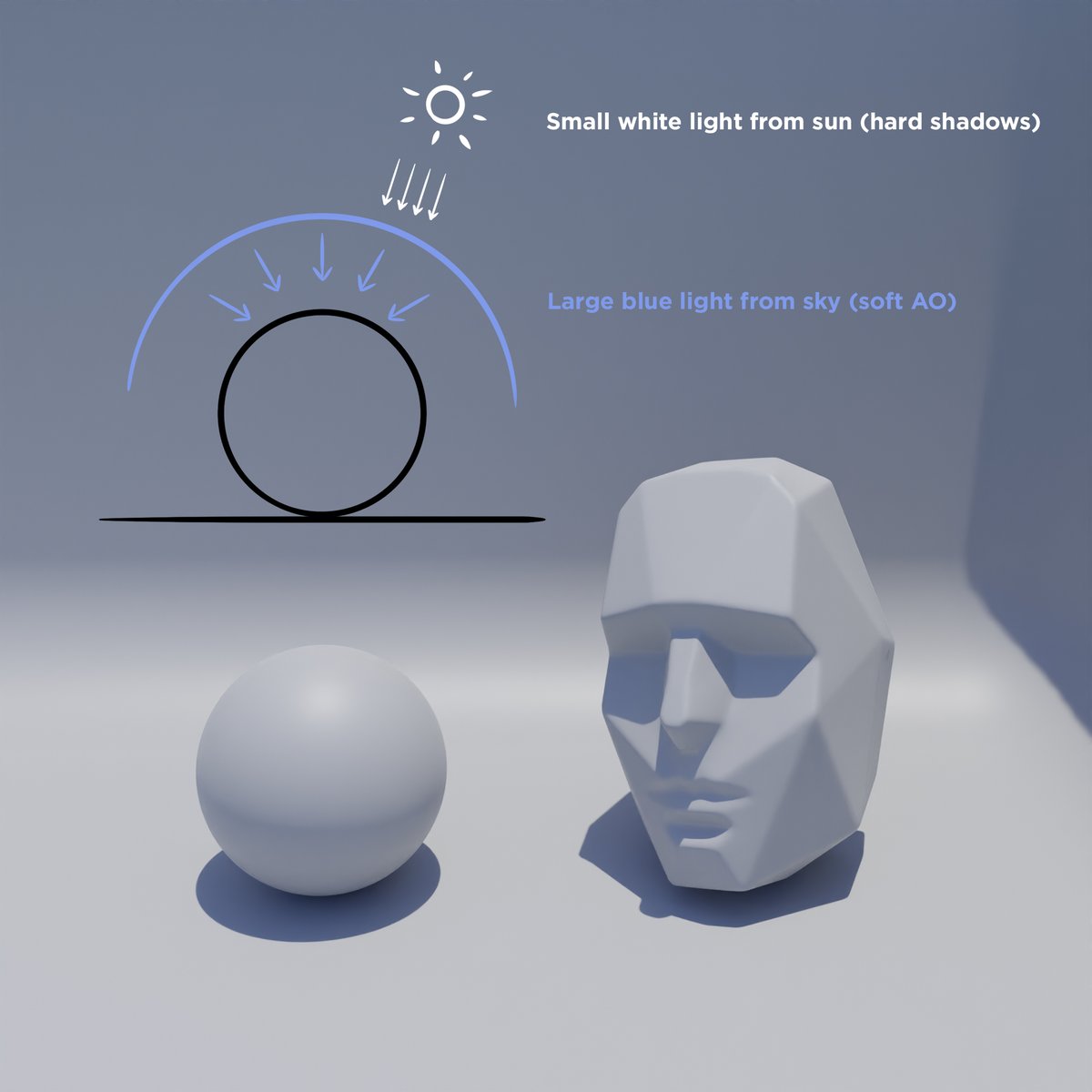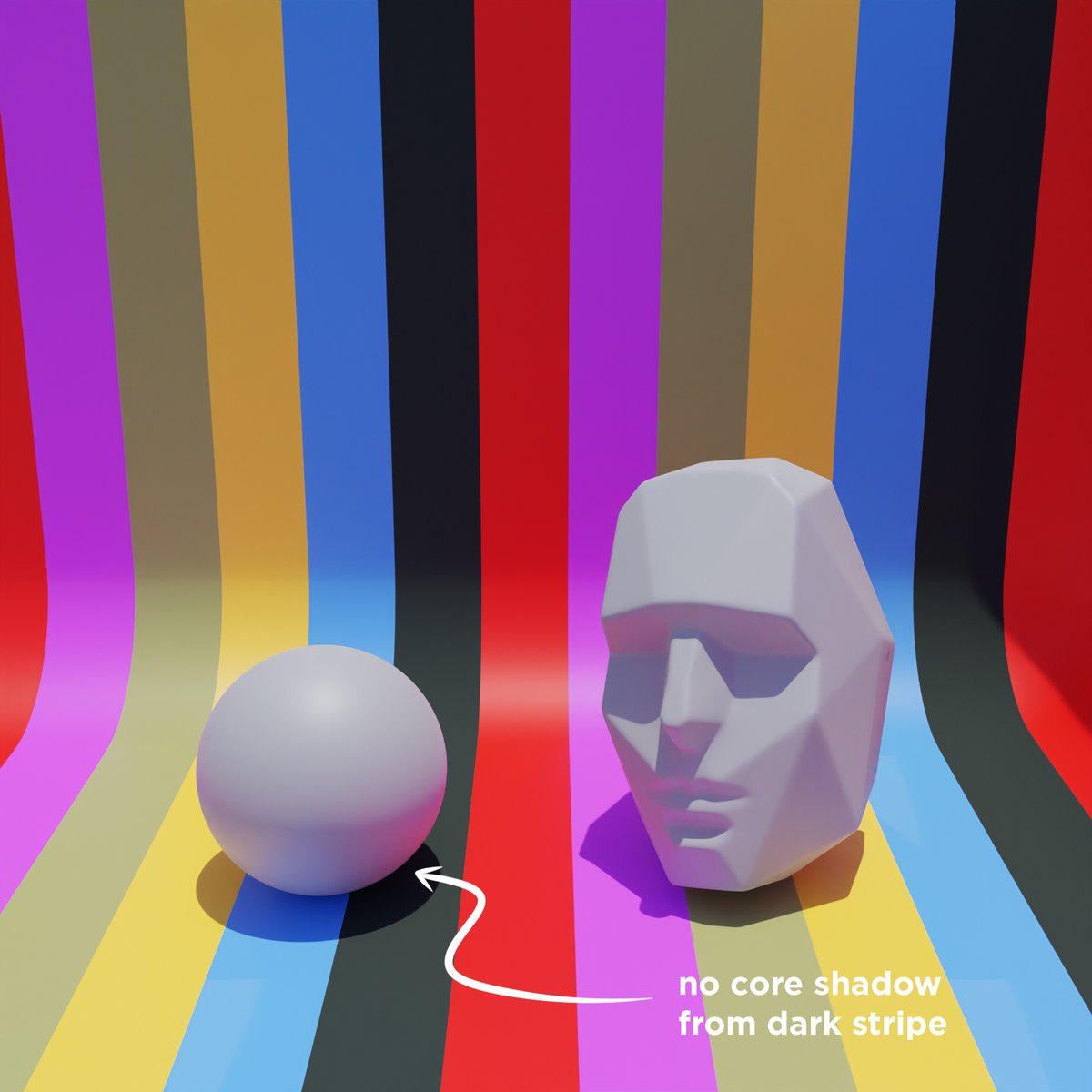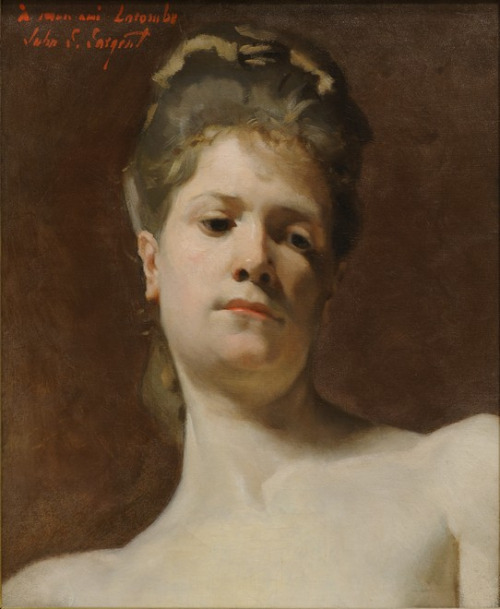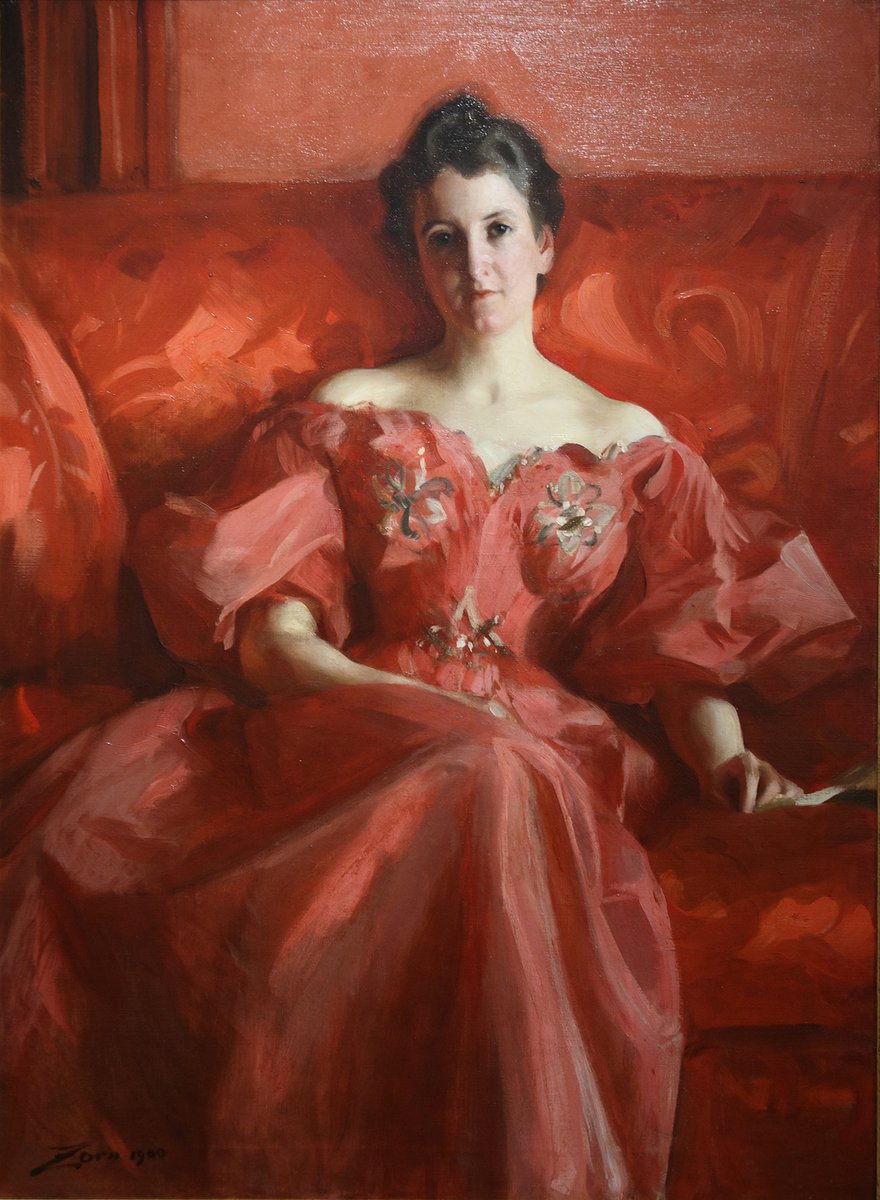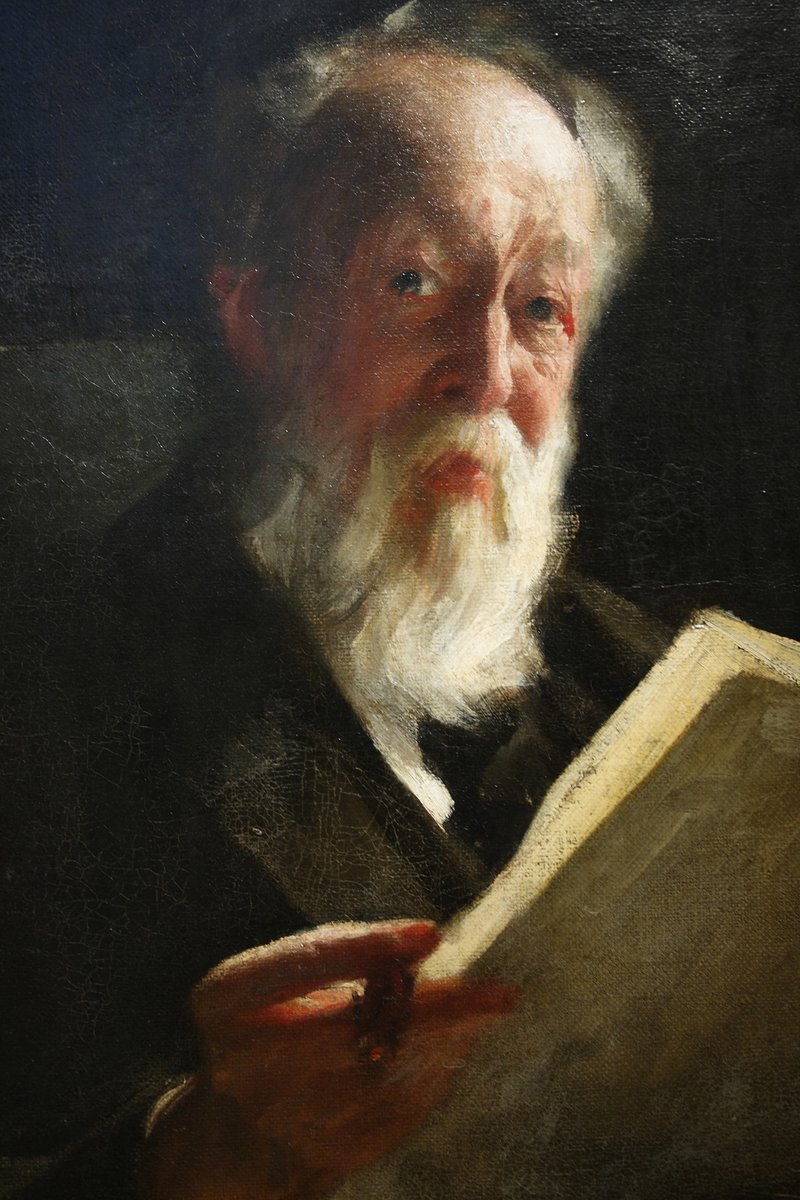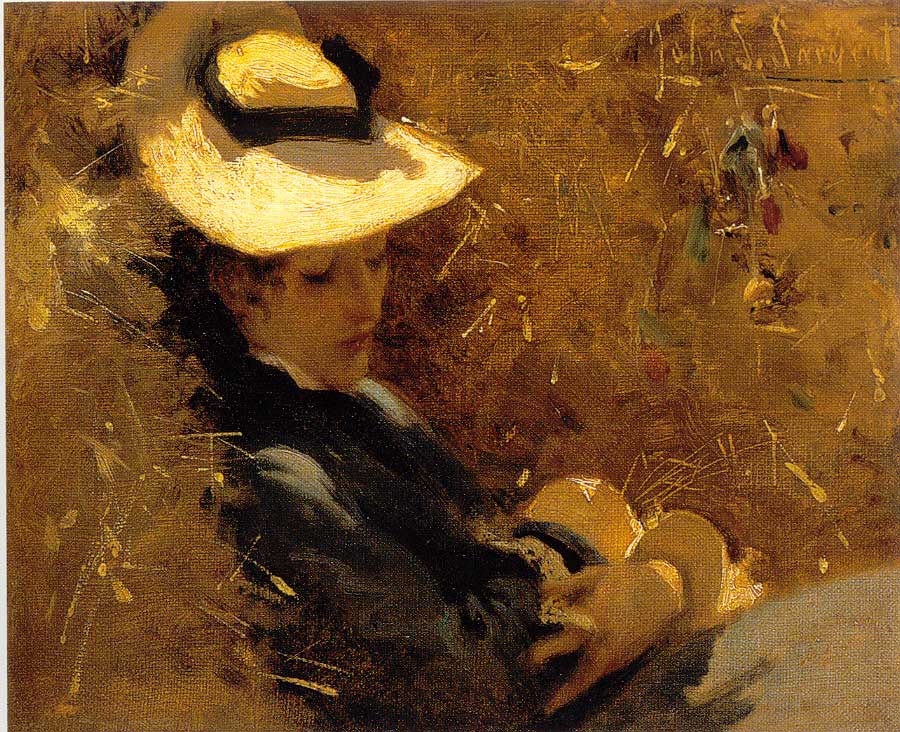Thread on shadows in painting! Have you ever noticed that darkest part of the shadow right before the reflected light? That’s called the core shadow. Why do they happen, and are they a part of every shadow?
I remember being very confused about core shadows - often I’d not be able to see them at all. I’d paint them in and it would look wrong and I wouldn’t know why. They are a useful tool to show form, but they happen under specific circumstances. Where are the core shadows here?
The secret to shadows is that as the size of the light source increases the shadows become softer. When the source is small, the light comes from a limited area, the line between light and blocked light is clearly defined. You get a sharper cast shadow, and defined core shadow.
When the light source is larger, the light rays come from a greater area and can still reach some of the areas blocked by an object. When this happens you will get a softer cast shadow, and the core shadow will be less defined and eventually disappear.
Here is an animation showing what happens as the light source size increases, notice the how the cast shadow as well as the form shadow changes.
A large light source is the sky! Cloudy days scatter light so the scene is evenly lit from all directions. Instead of core shadows, you get soft shadows in areas where light can& #39;t reach, and secondary light causes changes in temp/hue with tiny changes in value instead.
See how minimized the core shadows are here, but notice the variety of hue shifts caused by the ground.
The sun is huge, so why does it cast sharp shadows and cause core shadows? The sun is so far away that it can be considered a tiny light source from infinitely far away. This means shadows will be cast all in the same direction rather than out from a point like a lightbulb.
To understand sunlight, break it down into its parts: the small source of directional light from the sun, and the large secondary light in all directions from the blue sky. The area in shadow will be influenced by the secondary light, so it will be cooler than the sunlight.
If there& #39;s no reflected light, there& #39;s no core shadow. Notice how the color and material of the ground affects the reflected light and thus the core shadow.
These elements (core shadows,ambient occlusion, etc.), are all different results of the same principle, so rather than memorizing different rules, try to think of the basic properties of light and that way you will be able to understand any lighting situation you come across.
Soft ambient occlusion shadows still happen in the shadow areas of sunlight, but often depending on the exposure you won’t even be able to see the value difference. See my previous thread on exposure for more on this: https://twitter.com/devinkorwin/status/1230216579406876672">https://twitter.com/devinkorw...
If you& #39;ve enjoyed this, check out the book I just released! It has all of my previous tutorials greatly expanded upon and with lots of bonuses like a glossary, recommended reading, and all the artists names right there with the examples! https://gumroad.com/l/YPtf/STAYHOMe ">https://gumroad.com/l/YPtf/ST...
Artist Credit: Anders Zorn, Edgar Maxence, John Singer Sargent, Emile Friant, Jules Bastien-Lepage

 Read on Twitter
Read on Twitter